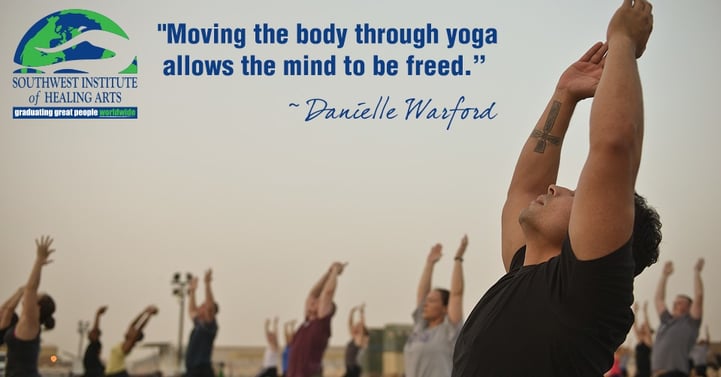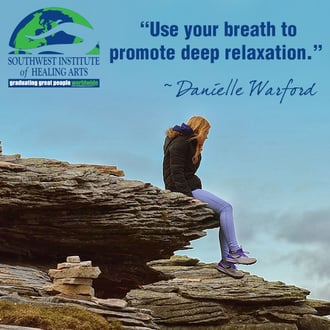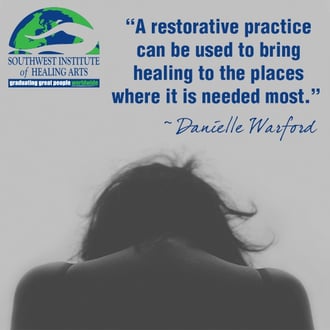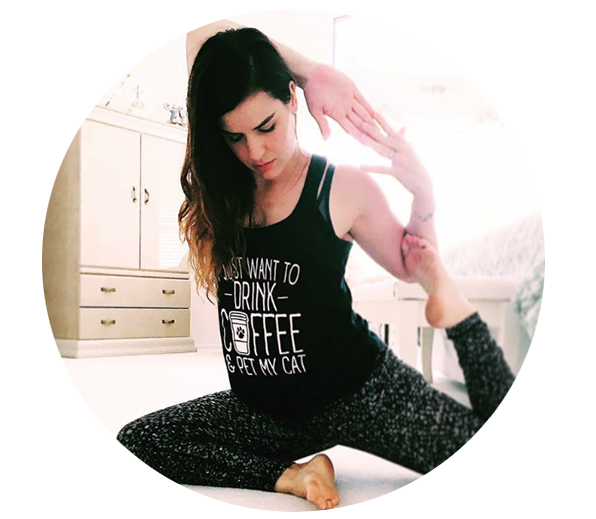In 2015, my uncle suddenly passed away from a heart attack. Because I was at his house when he was found, I had the terrible and sad experience of seeing him after death in a state that I wish I could erase from my memory. I dealt with nightmares and trouble sleeping, and so I decided to see a therapist to talk it out, as I could not get the images out of my mind.The therapist had a list of suggestions and tools to help me cope with this trauma. On this list was a familiar word: yoga training.
I have been a yogi since I was twelve years-old, and so I wasn’t surprised to see that yoga training could be useful for my healing, knowing exactly just how much peace of mind it can offer to practitioners; at the same time, my practice had very much suffered due to how busy my life had become. Once I realized what I was missing, I began to use yoga as a tool to speed up my healing process, taking all of the classes I could squeeze into my schedule. I eventually found restorative yoga to be the most beneficial for me personally, as it directed me to my painful memories and provided me with the safe space to sit with them. As it turns out, revisiting these memories and letting them “be” rather than avoiding them was exactly what I needed to help me move past the deep fear I held within me. Finally, I could allow myself to heal.
Ultimately, it was not until I had begun to process my trauma that I was able to recognize it for what it was. Moving the body through yoga allows the mind to be freed and the soul to shift and emerge into a new awareness; this form of kinesthetic meditation helped me reframe my experience with Post Traumatic Stress Disorder, or PTSD, as a linear process of healing—one that requires time and consistent attention.
What is Post Traumatic Stress Disorder?
PTSD is a delicate and serious mental state which can affect anyone who suffers through or witnesses a traumatic situation. Although veterans do make up a large portion of those who live with PTSD, it is—despite common misconception—a condition experienced by civilians as well who have faced their own array of terror-inducing situations.
There have been many research programs and studies dedicated to the use of yoga in aiding the healing of patients with Post Traumatic Stress Disorder. Doctors and psychologists alike add yoga into their therapy plans regularly for patients who need a natural alternative or supplementation to medication. Researchers and physicians understand that a mind-body yoga practice and deep breathing are beneficial to the mental health of any patient.
How does yoga heal?
Yoga is a form of self-discipline which brings the mind and body together as one to allow a foundation for deep healing. Allowing the mind and body to meld together and harnessing the breathing techniques that yoga provides sets the stage for peacefulness and reduced anxiety.
There are many varieties of yoga training, including Hatha or Vinyasa, which encourage the body to flow into a slow form of dance, aiding in peace and relaxation. Alternatively, Power Yoga allows the patient to release tension or pent up anxiety. Any form of yoga that works for the patient at certain times in their healing journey will aid in the process.
Other forms of yoga focus on the mind and promoting deep relaxation. Practices like Restorative Yoga and Yoga Nidra guide the mind into a meditative state. Restorative yoga involves arranging the body into positions in which the muscles do no work whatsoever, enabling the mind to begin to calm and center into a place of stillness. For those with PTSD, this may bring up certain memories which are trigger points. Allowing the mind to go to those places and “sit there" in the memories is one of the first steps to healing. A restorative practice can be used to bring healing to the places where it is needed most.
Yoga Nidra, also known as Yogic Sleep, is a relaxation practice during which a student is moved through a guided mediation. During a Nidra session, affirmations and spoken meditation is used to induce a blissful state of consciousness. In turn, this promotes deep relaxation and is a beneficial tool for insomnia, which many people with PTSD encounter. Nidra navigates the practitioner through different states of consciousness, creating space to drift from the waking state straight into a deep sleep state, bypassing the dreaming stage. This lets the body delve into total relaxation and is beneficial for deep healing.
If you or someone you know is dealing with PTSD, or is in need of any form of healing, give yoga a chance. Use your body as a moving meditation, use your breath to promote deep relaxation, and allow your soul to begin to heal.
To learn more about the Yoga Teacher Training offered by SWIHA, including PTSD-informed yoga classes, click below:





